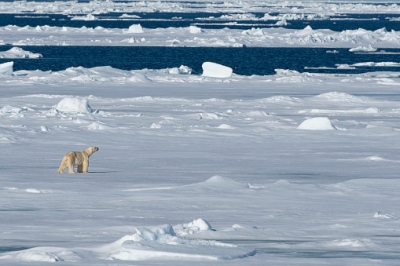
|
Almost 10 per cent of Earth’s total landmass is covered by ice. This includes glaciers, Ice caps and ice sheets. Glaciers cover 15 million km2. During the last ice age, 32 per cent of the total land area was covered by ice. |
Most of the Earth’s ice that we see is to be found in large masses of “nearly” pure ice: ice-sheets and glaciers of various types, ice shelves and sea ice packs. It is quite easy to calculate the surface of the areas covered with ice: it has been calculated that this amounts to approximately 15 million km2, equal to one tenth of the surface of the Earth’s emersed land. It is more difficult, on the contrary, to calculate the volume of ice because the thickness of the entire covered area must be known: using special techniques it is possible to measure the ice thickness in various points of a glacier and therefore to estimate the volume. For example the average thickness of the Antarctic sheet is 2,100 m, with peaks of 4,800 m in Land of Wilkes, in the Eastern sector: with a surface of little less than 13,600,000 km2, the total volume of the Antarctic ice is 30 million km3.
Credit: Energy & environment
Picture Credit : Google




